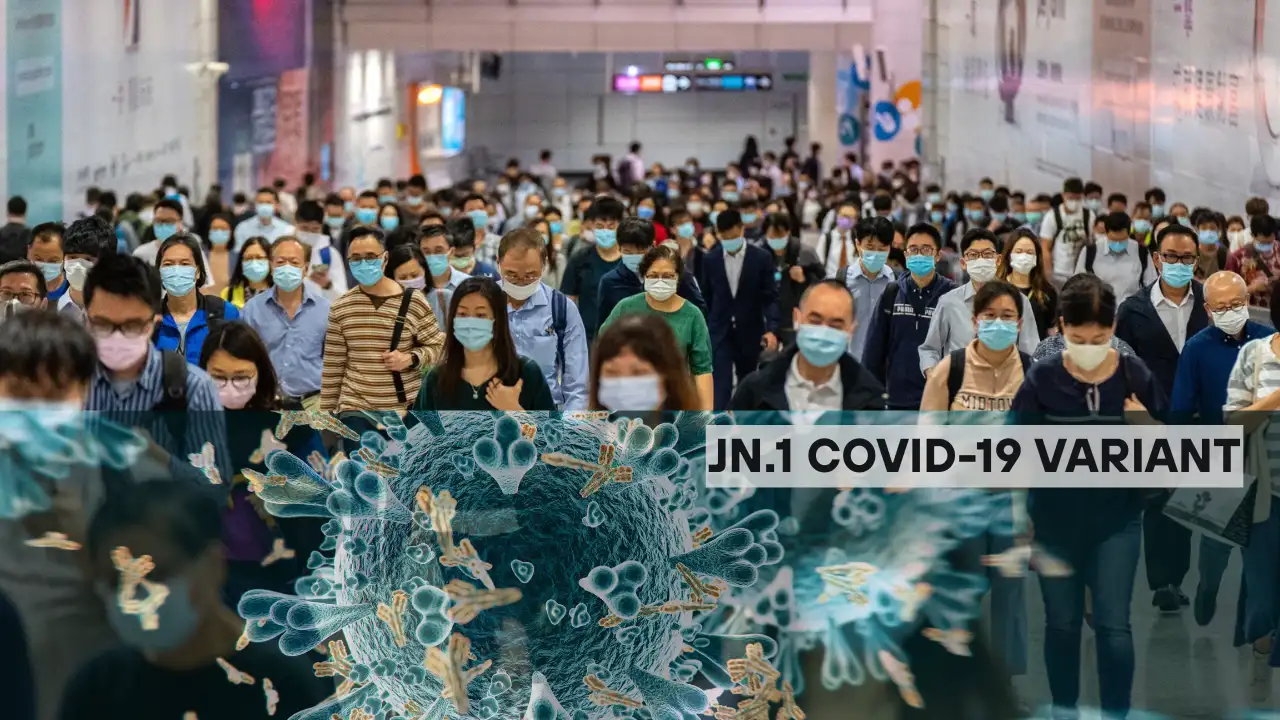
JN.1 is a descendant of the BA.2.86, also known as ‘Pirola’ strain, subvariant of coronavirus was first detected in 2023.
As parts of Asia struggle with a new wave of COVID-19 infections, a familiar but concerning player has has re-emerged, JN.1, a subvariant of the Omicron strain. From Singapore and Hong Kong through Thailand and possibly India, this new wave is sending warning signs around the world as cases pile up and health systems prepare for the worst.
COVID-19 infections are increasing sharply in many Asian countries. Singapore reported a significant surge—from 11,100 cases in late April to more than 14,200 in mid-May 2025. Hospital admissions per day have also risen, from an average of 102 to 133 over the same period, while ICU admissions have dropped modestly.
In Hong Kong, the public health authorities are seeing the largest proportion of positive respiratory samples for COVID-19 in more than a year. The Centre for Health Protection has confirmed that the virus is "spreading quite high," indicating a possibility of a wave similar to previous surges.
India, for the moment at least, is only reporting 93 active cases as of May 19 but leading Indian doctors are warning that a spike may be imminen, citing declining immunity in the population and comparing the trends with what has occurred in other countries in Asia.
JN.1 and Its Descendants
The primary drivers of this new wave are sub-variants of Omicron, specifically LF.7 and NB.1.8—both direct descendants of JN.1. This places JN.1 and its lineage at the epicenter of understanding the present outbreak patterns.
First identified in August 2023 and classified as a 'Variant of Interest' by the World Health Organization in December, JN.1 is a BA.2.86 sub-lineage or 'Pirola'. With almost 30 mutations on its spike protein, JN.1 was engineered—so to speak—to evade both immunity and vaccines. Its ability to spread quickly was demonstrated when it rapidly became the most prevalent strain in the United States by January 2024.
What are the Symptoms of the JN.1 COVID-19 Variant?
The JN.1 COVID-19 variant, which is a lineage of Omicron, has common symptoms with previous strains but is characterized by its extremely high transmissibility. Because of this, it is able to rapidly spread in communities and health facilities. Its symptoms appear within 2 to 14 days after infection and can be from mild to severe. The common symptoms are:
- Fever or chills
- A dry, non-productive cough
- Shortness of breath or shortness of breath
- Fatigue
- Body or muscle aches
- Headache
- Sore throat
- Runny nose or congestion
While symptoms usually stay manageable, individuals—particularly those who have chronic health conditions—should keep an eye on their health and get medical help if symptoms become worse.
Is JN.1 Different And Dangerous?
JN.1 differs from its parent strain Pirola by a single significant mutation in its spike protein, which could potentially further extend its potential to bypass immune defenses. Although, however, existing evidence indicates it does not create more severe illness than earlier variants. Symptoms are still similar—fever, dry cough, breathlessness, tiredness, sore throat, and runny nose—and are more dependent upon individual immunity than the virus.
The real strength of the variant is its speed. In America, it progressed from 3.5% of the cases in November 2023 to more than 85% in mid-January 2024. The same explosive growth pattern is now being replicated in Asia.
What This Means for India and the Rest of the World?
The increase in JN.1-driven cases again puts a question mark over population immunity, vaccine efficacy, and long COVID risk. Though India's current caseload is low, previous trends suggest the country cannot stay sheltered for much longer. With antibody levels declining after vaccination or infection, the population remains at risk.
Health officials are currently more interested in tracking hospitalizations and serious cases than in total infection rates. The silver lining? Vaccines, particularly new formulations launched in fall 2024, should provide immunity against JN.1. Rapid antigen and PCR tests used to diagnose COVID-19 can still pick up the virus easily.
How To Stay Protected?
Vaccination is still the first line of defense. New COVID-19 boosters are now being made available for all those 6 months and older and are recommended as a seasonal precaution—especially with JN.1 circulating worldwide. Extra RSV and flu vaccines are also being made available to high-risk populations, protecting populations from the dreaded "tripledemic."
Outside of vaccines, routine COVID precautions continue to carry influence:
- Wearing a mask in crowded or poorly ventilated areas
- Hand washing
- Staying away from symptomatic individuals
- Tracking local transmission rates
For infected individuals, symptoms typically develop within 2 to 14 days after exposure and last days to weeks. For persistent symptoms, especially fatigue or shortness of breath, it can be a sign of long COVID, a medical condition.
